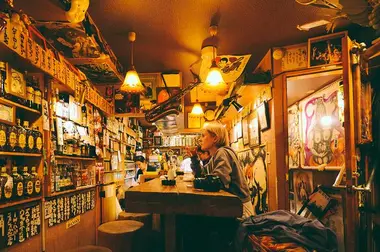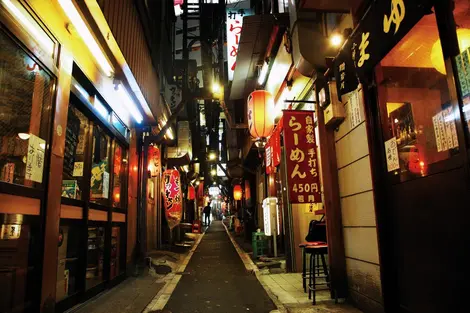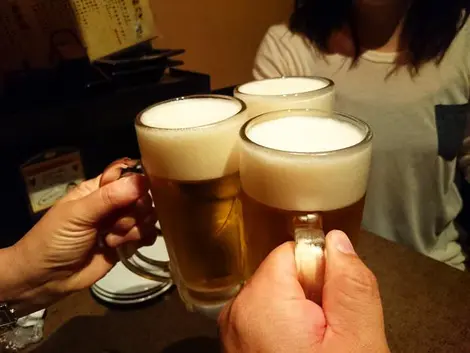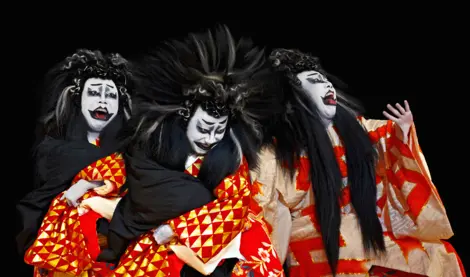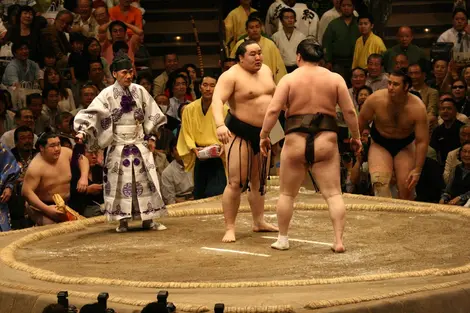Nightlife in Japan: Going out, seeing and drinking
- Published on : 04/07/2024
- by : J.L.T.B.
- Youtube
Japan offers a vibrant and diverse nightlife, particularly in its major metropolises. From traditional izakayas to ultra-modern nightclubs, themed bars and cultural shows, the options for going out at night are almost endless. Whether you're a fan of sake, karaoke or simply looking for a unique experience, Japanese nightlife is sure to please. Discover the different facets of Japanese nightlife, its customs and its must-see places for a total immersion in the after-sunset entertainment culture.
Japanese nightlife culture
Nightlife occupies an important place in Japanese culture, reflecting both the country's traditions and modernity. In big cities like Tokyo and Osaka, the entertainment industry is particularly well-developed, offering a multitude of options to suit all tastes. After-work is a veritable institution, with many employees gathering to eat and drink after their day's work.
Alcohol consumption plays a significant social role, particularly in the workplace. Nomikai, or an evening of drinking among colleagues, is a common practice that helps strengthen bonds within the company. However, Japanese nightlife is not limited to alcohol. Activities such as karaoke, 24-hour arcades and manga cafés offer alternatives for those who prefer to stay sober.
Etiquette and respect for rules are paramount, even in festive contexts. It's important to know the codes of conduct if you want to make the most of the Japanese night without committing a blunder. For example, it's frowned upon to eat or drink while walking down the street, and tipping is not generally practiced in bars and restaurants.
The izakaya: the beating heart of Japanese parties
The izakaya is the Japanese equivalent of a pub or tapas bar, and is the mainstay of Japanese nightlife. These convivial establishments are the perfect place to start an evening or spend a few hours drinking and snacking with friends. Izakayas are characterized by their relaxed atmosphere and wide selection of drinks and small dishes to share.
A typical izakaya menu includes a variety of traditional Japanese dishes such as yakitori (grilled chicken skewers), karaage (fried chicken), edamame, tofu and grilled fish. On the drinks side, you'll usually find beer, sake, shochu (Japanese spirits) and various cocktails. Many izakayas offer nomihodai (all-you-can-drink) packages for a fixed price, usually valid for a limited time only.
For an authentic izakaya experience, it's best to order several small dishes to share, accompanied by a variety of drinks. Don't hesitate to ask the staff for recommendations on house specialties or food-drink pairings. Bear in mind that some izakayas may impose a time limit of two hours per table during busy periods.
Beyond the bars: a variety of nightlife activities
Japanese nightlife isn't limited to bars and izakayas. The country offers a multitude of original night-time activities to suit all tastes. Karaoke is an institution in Japan, with all-night establishments offering private rooms equipped with state-of-the-art sound systems. It's the perfect opportunity to sing at the top of your lungs without fearing the judgment of others.
Gaming enthusiasts will be delighted by the many arcades open 24 hours a day, offering a variety of video games, slot machines and skill games. For a quieter experience, manga cafés allow you to read Japanese comics all night in comfortable surroundings. These establishments often offer private booths with internet connection, ideal for relaxing before the first morning subway.
For thrill-seekers, why not cheer on a baseball team at a night game? The atmosphere in Japanese stadiums is electric, with passionate fans and entertainment throughout the game. Couples, meanwhile, can take advantage of the many ideas for outings as a couple, such as a night cruise on Tokyo Bay or a visit to an onsen (hot spring) under the stars.
Nightlife specifics by city
Every major Japanese city has its own nightlife identity, with emblematic districts and establishments. Tokyo, the capital, is renowned for the diversity of its nightlife. The Shinjuku district is the ideal place to visit izakayas, while Golden Gai offers a unique concentration of tiny bars with a variety of atmospheres. Kabukicho, Japan's largest red light district, is packed with bars, clubs and restaurants open all night long.
Osaka is known for its relaxed atmosphere and street food. The lively Dotonbori district is the heart of Osaka's nightlife, with its giant neon signs and numerous restaurants. The city is also renowned for its comedy bars, where you can enjoy English-language comedy shows.
Kyoto, though more traditional, also offers unique nightlife experiences. The Ponto-chô district, with its narrow streets lined with lanterns, is home to many traditional bars and restaurants. It's also the ideal place to catch a glimpse of geishas on their way to their evening rendezvous.
Cultural evenings out
Japan offers many opportunities to discover its traditional culture in the evening. Martial arts enthusiasts can attend sumo tournaments, a unique experience combining sport and tradition. Although the main fights take place in the afternoon, the atmosphere in the sumo halls remains electric well into the evening.
Traditional Japanese theater also offers captivating night-time performances. Noh theater, with its masks and slow, stylized movements, sometimes offers evening performances in historic settings. Kabuki, more flamboyant and accessible, can be enjoyed at Tokyo's Kabukiza theater in Ginza, which offers evening performances with simultaneous translation systems.
For a more intimate experience, attend a demonstration of bunraku, the traditional Japanese puppet theater. These shows, often scheduled in the evening, offer a fascinating insight into this ancient art form. Don't forget to check out Japan's 3 (+ 3) most beautiful night views to end your cultural evening on a panoramic note.
Etiquette and practical advice for going out in Japan
To enjoy Japanese nightlife to the full, it's important to know and respect certain rules of etiquette. In bars and izakayas, it's customary to pay at the cash register rather than at the table. Tipping is not practiced in Japan and may even be considered offensive. When drinking with a group, it is customary to wait until everyone has been served before toasting with "Kanpai!
Street drinking is generally forbidden, except at certain festivals. Eating or drinking while walking is also frowned upon. On public transport, avoid talking loudly or using your telephone to avoid disturbing other passengers. If you visit a pachinko, be aware that these venues can be very noisy and smoky.
For your own safety, be careful in busy areas like Tokyo's Kabukicho, where some establishments may try to overcharge tourists. Choose bars and clubs that are recommended or frequented by locals. Don't hesitate to ask your hotel or tourist office for reliable recommendations.
Getting home after a night out in Japan
Most public transport in Japan stops between midnight and 1am. If you miss the last train, you have several options. Cabs are widely available, but can be expensive, especially for long distances. In larger cities, night buses run on some popular routes, offering a more economical alternative.
For those who want to keep the party going into the early hours, many bars and clubs stay open all night, allowing you to wait for the first train. Manga cafés are also a popular option for spending the night, offering comfortable spaces to rest and read manga while you wait for transport to resume.
If you're planning a long night, remember to book a hotel close to the area where you're going out. Many establishments offer special rates for late check-ins. Finally, for a truly Japanese experience, why not end your evening at a 24-hour onsen? It's the perfect opportunity to relax and recuperate before heading home.
Nightlife in Japan offers a wealth of unique experiences, blending tradition and modernity. Whether you're a lover of gastronomy, culture or simply looking for a festive atmosphere, you'll find what you're looking for in Japanese nights. Feel free to explore the different neighborhoods and mingle with the locals for total immersion. Make the most of Tokyo's nightlife with our free 8-day tour of the Japanese capital! One thing's for sure: your outings in Japan will remain engraved in your memory as unforgettable moments of your trip.
Nightlife in Japan: Going out, seeing and drinking
Other themes :
- Train in Japan
- Attractions and Excursions
- Before you Travel
- Books on Japan
- Events and Festivals
- Family Travel
- Getting Around Kyoto
- Getting Around Tokyo
- Itineraries for Japan
- Japanese Food and Drink
- Japanese History
- Japanese Language
- Japanese Movies
- Japanese Pop Culture
- Japanese Stations
- Markets in Japan
- Museums and Galleries
- Onsen, Hot Springs and Public Baths
- Outdoor Activities
- Parks and Gardens
- Restaurants and Cafes
- Shinkansen Travel Tips
- Shopping and souvenirs
- Temples and shrines in Japan
- Travelling in Japan: a comprehensive guide
- Understanding Japan
- Unique Trains in Japan

